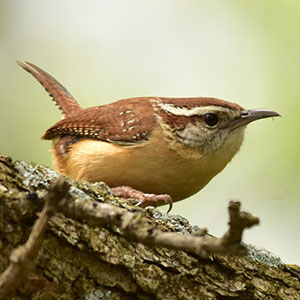
Furman professor and students conducted research on Upstate Forever protected lands
December 14th 2017
During the summer months of 2017, Furman University biology professor John Quinn and Emma Cook, a biology and sustainability science major, conducted research on selected Upstate Forever conservation lands to understand how bird species are responding to land use change across the Upstate region.
The researchers, along with other students from Furman, conducted surveys of birds at 57 forest patches across 6 counties in Upstate South Carolina, including 13 Upstate Forever easement properties, 25 protected lands consisting of state parks and heritage preserves, and 19 unprotected patches. Patches were sampled three times each for 10-minutes. All birds seen and heard were recorded, and all surveys were conducted within 4 hrs of dawn. Bird abundance and diversity data were collected as a measure of habitat quality.
Preliminary findings indicate that habitat for some species may be of higher quality on conservation easement properties than on either protected (non-easement) areas or unprotected areas for some bird species (i.e. Yellow-billed Cuckoo and Carolina Wren, which are both designated as priority species by SCDNR). This indicates that easements are acting as an effective conservation tool in Upstate South Carolina.
This research builds on the Critical Lands mapping project that Upstate Forever conducted in 2016 that showed that Upstate Forever easements had on average higher quality forest habitat than other forest patches in the Upstate.
Results also showed that abundance of some species (Wood Thrush and Yellow-billed Cuckoo) significantly declines with increasing land development in the area surrounding a patch. The nature of surrounding land use was found to be more important in determining habitat quality than the size of the forested tract surveyed. This highlights the importance of both maintaining large tracts of contiguous protected areas and limiting intensive development near these critical lands.
This research was presented at the Ecological Society of America Annual meeting in August 2017 with full results published in 2018. For further information about this research and similar conservation projects please visit http://johnquinniv.wixsite.com/johnquinniv.
